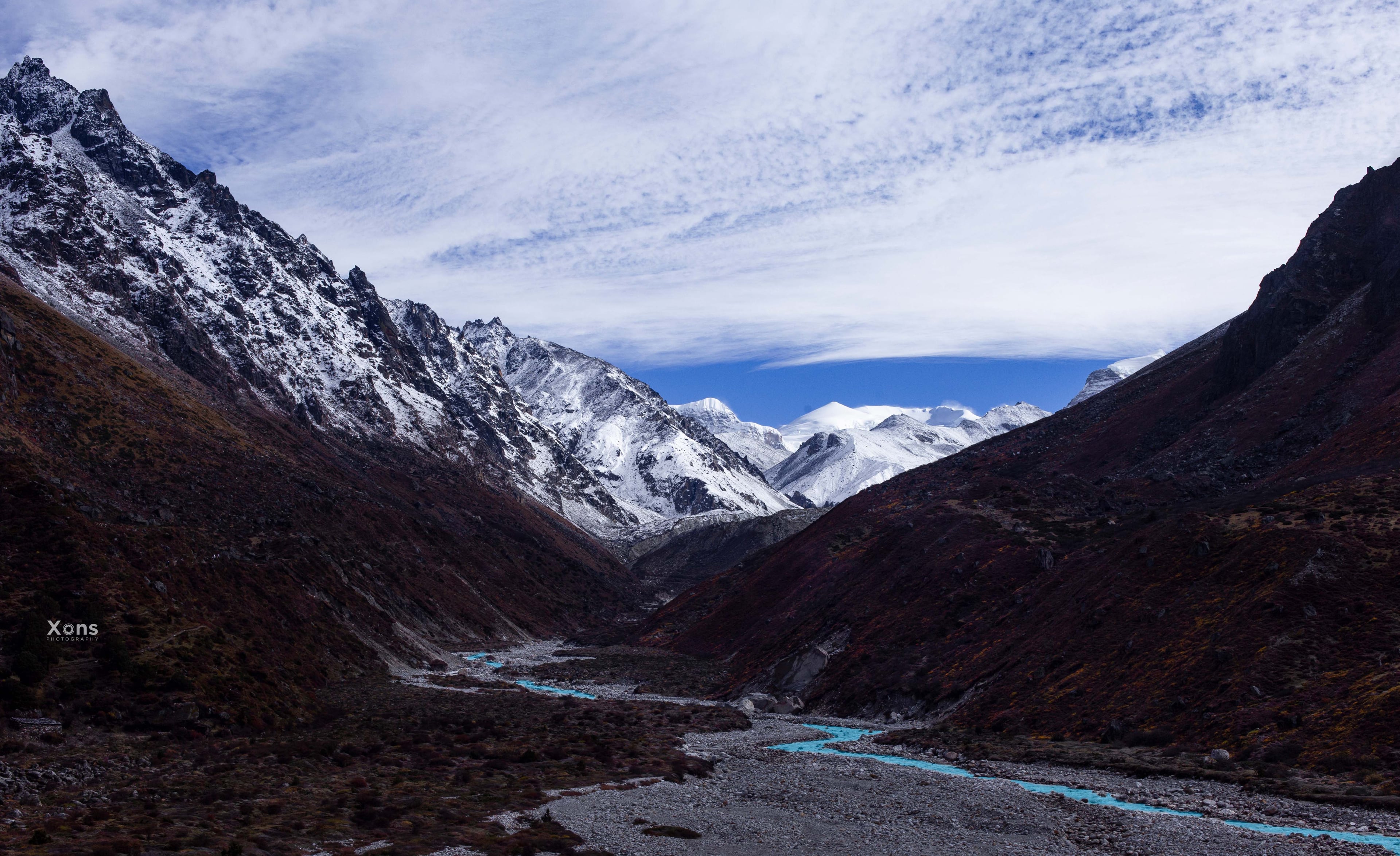For centuries, poets and explorers alike have tried to capture the beauty of the Himalayas in words. Yet, when it comes to Mount Kanchenjunga, the essence remains elusive. Standing before the mighty peaks, you're not merely witnessing a mountain—you’re in the presence of something timeless, a marvel that transcends human description.
About Mount Kanchenjunga
Kanchenjunga, the world’s third-highest peak at 8,586 meters (28,169 feet), lies in the far-eastern Himalayas, bordering Nepal and India. Known as the "Five Treasures of Snow" in Tibetan, this mountain has long been revered by locals, symbolizing wealth in the form of gold, silver, precious stones, grain, and holy scriptures.
First climbed in 1955 by a British expedition led by Charles Evans, the summit remains sacred to many. Even today, climbers stop just short of the actual peak out of respect for local traditions. The mountain’s grandeur extends beyond its physical scale, symbolizing spiritual nourishment, as captured beautifully by the Russian philosopher Nicolas Roerich: "It contains treasures not of gold or diamonds, but spiritual gifts for mankind."
The Kanchenjunga Base Camp Trek
The Kanchenjunga Base Camp Trek is one of Nepal’s most remote and beautiful treks, offering unparalleled views of the Himalayas, towering glaciers, and a rich cultural experience. Unlike the more popular Everest and Annapurna treks, this route remains unspoiled, allowing trekkers to witness an untouched wilderness and vibrant local communities.
Northern and Southern Routes
The trek offers two main routes:
The Northern Base Camp (Pang Pema): This route takes you along the Kanchenjunga Glacier and offers stunning views of Kanchenjunga's northern face. As you ascend through lush forests, alpine meadows, and dramatic ridges, the glaciers unfold before you like a living testament to nature’s grandeur.
The Southern Base Camp (Yalung Glacier): Approaching the mountain from the south, you’ll trek through high ridges to the Yalung Glacier, where Kanchenjunga’s imposing South West Face dominates the landscape. The climb may be challenging, but it is a journey into the heart of one of the Himalayas' most majestic regions.
For those with time and endurance, these two routes can be combined, creating a circuit that showcases both sides of the mountain.
Kanchenjunga Conservation Area: A Natural Paradise
Designated as a conservation area in 1998, the Kanchenjunga Conservation Area (KCA) covers 2,035 square kilometers and is Nepal’s first community-managed conservation area. This region is a biodiversity hotspot, home to around 2,000 species of plants, 69 varieties of orchids, and 30 types of rhododendrons. The area is also a haven for wildlife, including endangered species like the snow leopard and red panda.
Trekkers to Kanchenjunga Base Camp can experience the full spectrum of the Himalayan ecosystem—from subtropical forests to high alpine meadows, offering a pristine wilderness where nature thrives.
Cultural Experience on the Kanchenjunga Trek
The trek isn’t just about the mountain—it’s also about the people who call this region home. The Kanchenjunga region is inhabited by ethnic groups like the Rai, Limbu, Sherpa, and Gurung, who practice a mix of Buddhist, Hindu, and animist traditions. Their connection to the land is deep-rooted, and their lifestyle remains largely unchanged by modernity.
For the Limbu people, Mount Kanchenjunga is known as "Sewalungma," which translates to “the mountain we offer greetings to.” It holds immense spiritual significance, and their myths and legends are intertwined with the peaks, valleys, and sacred landscapes surrounding Kanchenjunga.
Trekking Logistics: When and How to Go
The best time to embark on the Kanchenjunga Base Camp Trek is in spring (March to May) and autumn (September to November). These months offer the most stable weather, clear skies, and comfortable trekking conditions. During monsoon, the trails can become slippery, and in winter, the cold can be harsh, making it a more challenging experience.
The trek starts in Taplejung, accessible by road or a short flight from Kathmandu to Suketar. From here, the journey into the mountains begins, taking you through terraced fields, dense forests, and across rivers, gradually ascending into alpine zones and beyond.
Why Kanchenjunga Base Camp?
While treks to Everest Base Camp and Annapurna Circuit attract the majority of trekkers, Kanchenjunga remains a hidden gem. Its remoteness offers solitude and the opportunity to connect with nature in its purest form. The trek is demanding, both physically and mentally, but the rewards are immense. You’ll traverse through some of the most stunning landscapes in Nepal, engage with warm-hearted local communities, and stand in awe of the towering, glistening peaks.
Conclusion: Answering the Call of the Mountains
Standing at Kanchenjunga Base Camp, gazing at the mountain’s snow-capped summit, you’ll feel a sense of awe that’s hard to describe. Perhaps Mark Twain put it best when he said, “Kanchenjunga is so high it seems part of the very sky itself.” Whether you're seeking adventure, spiritual reflection, or the untouched beauty of the Himalayas, the Kanchenjunga Base Camp Trek promises an experience of a lifetime.
So, if you're ready to step off the beaten path and into the wild, raw beauty of eastern Nepal, the majestic Kanchenjunga is calling.

